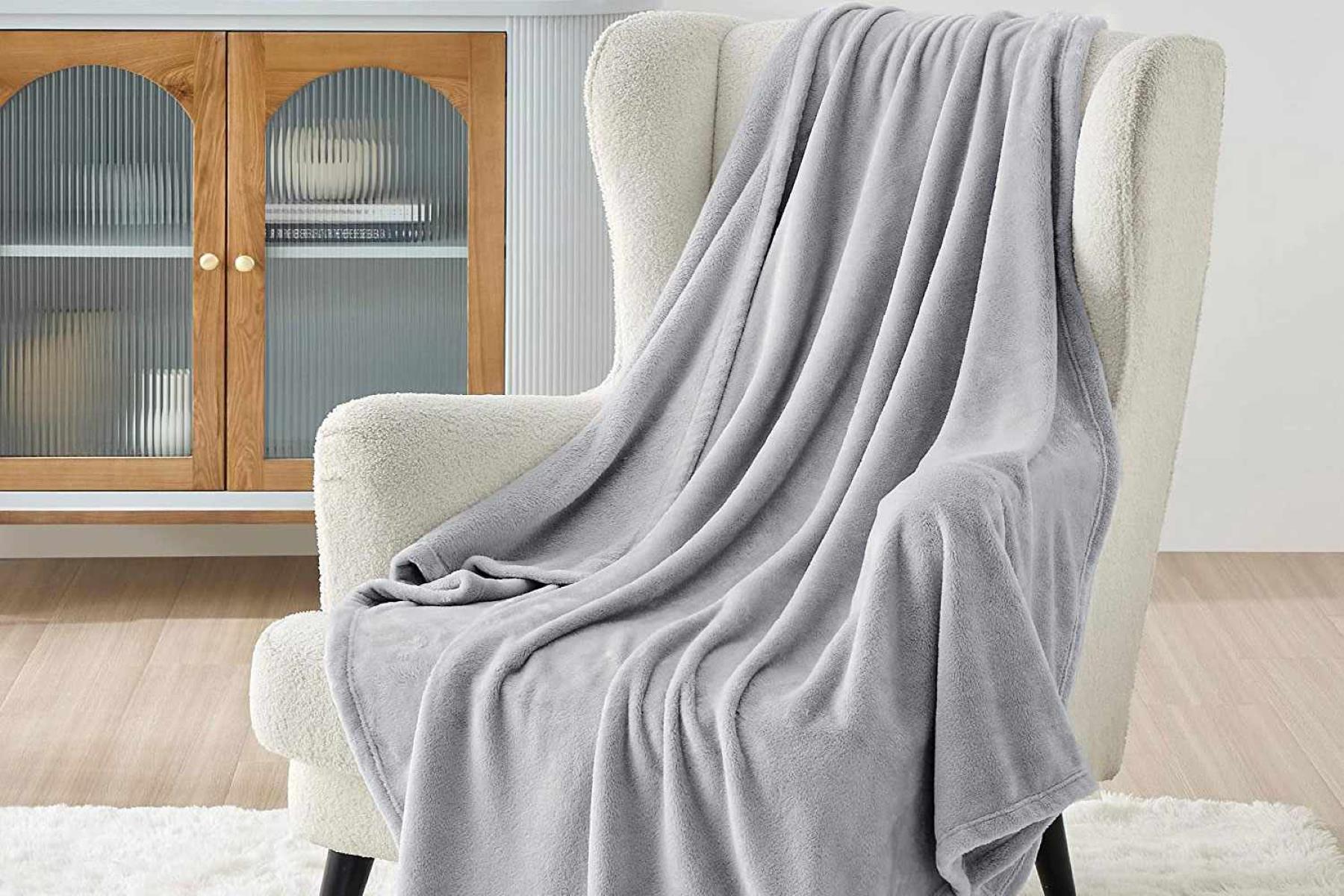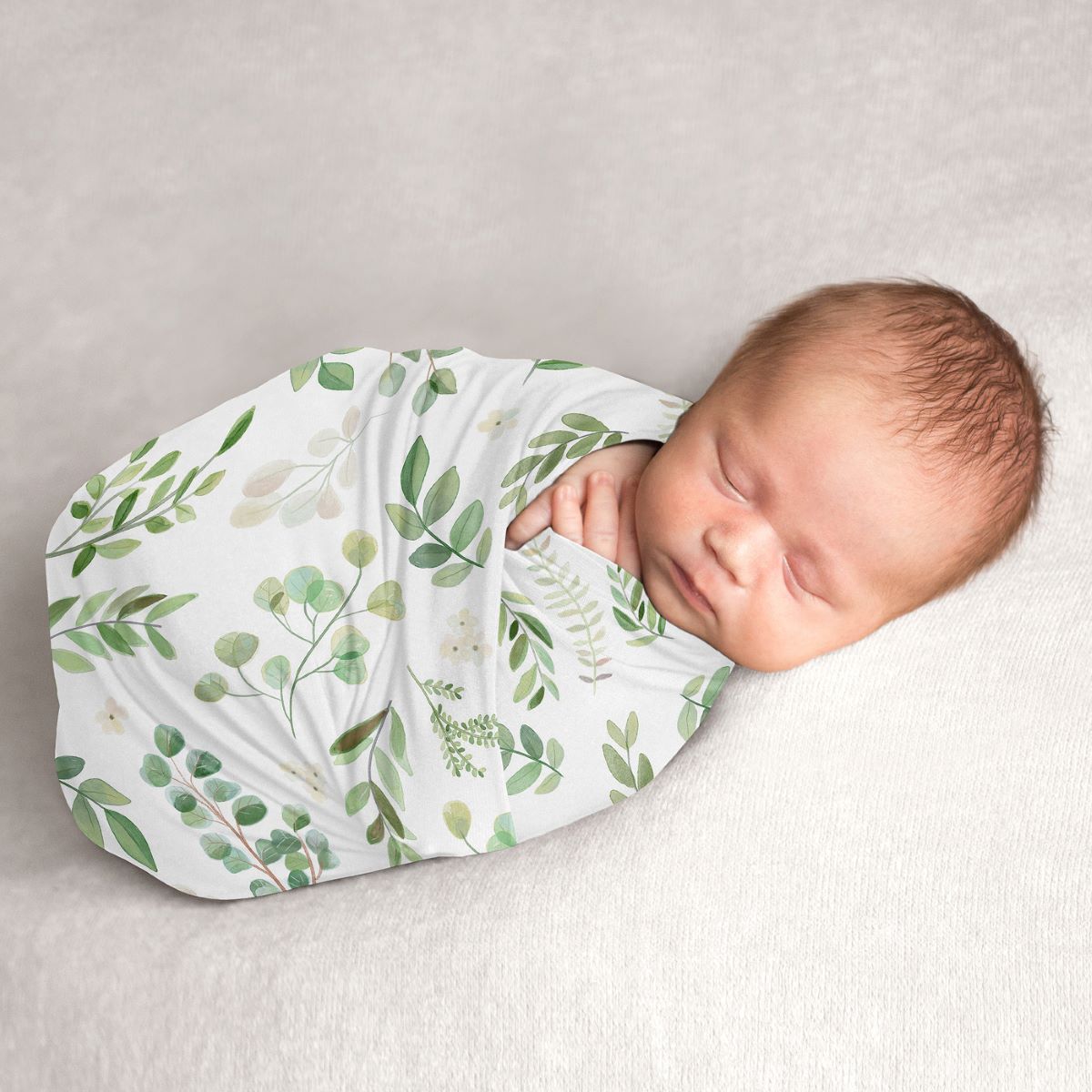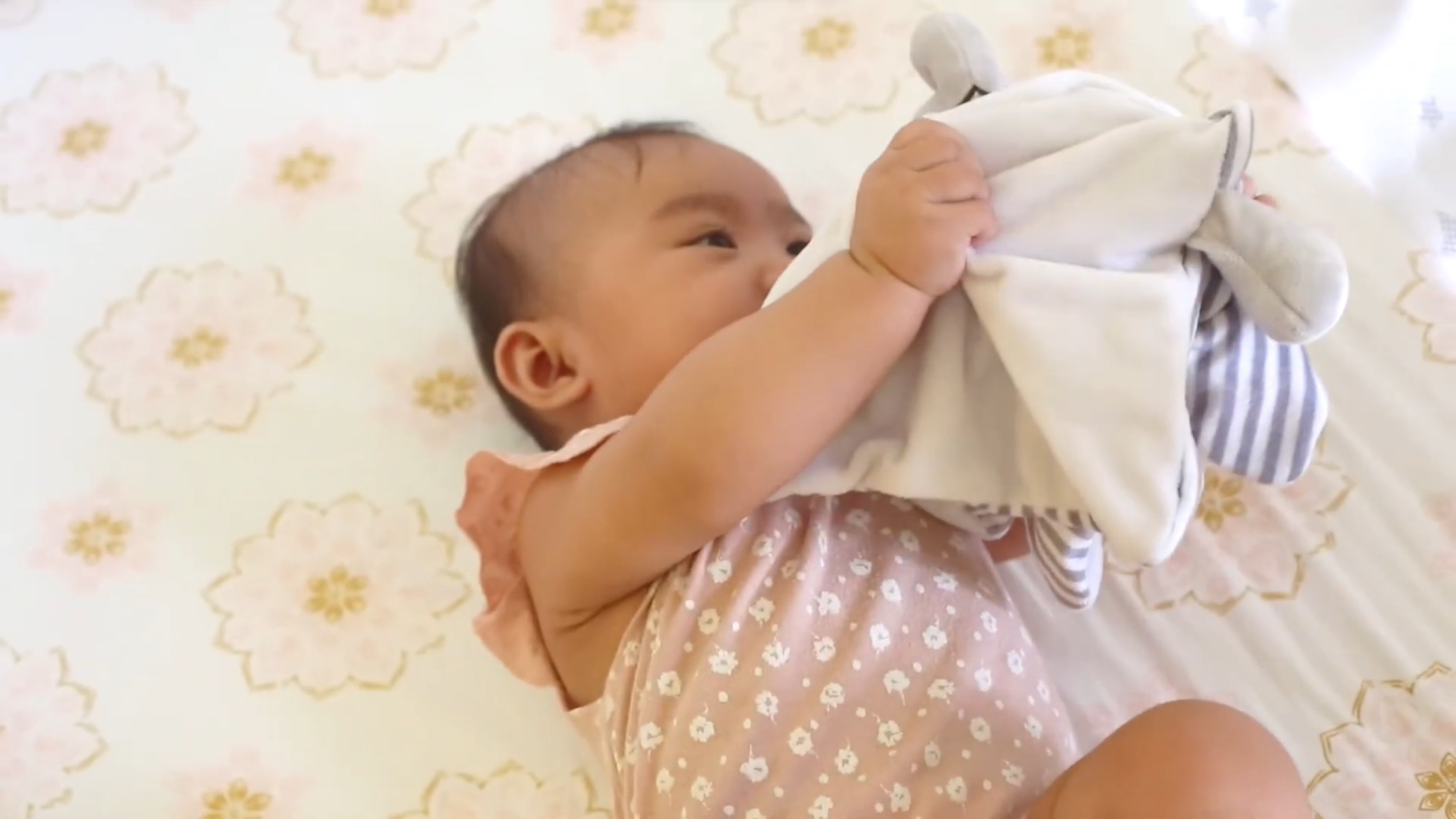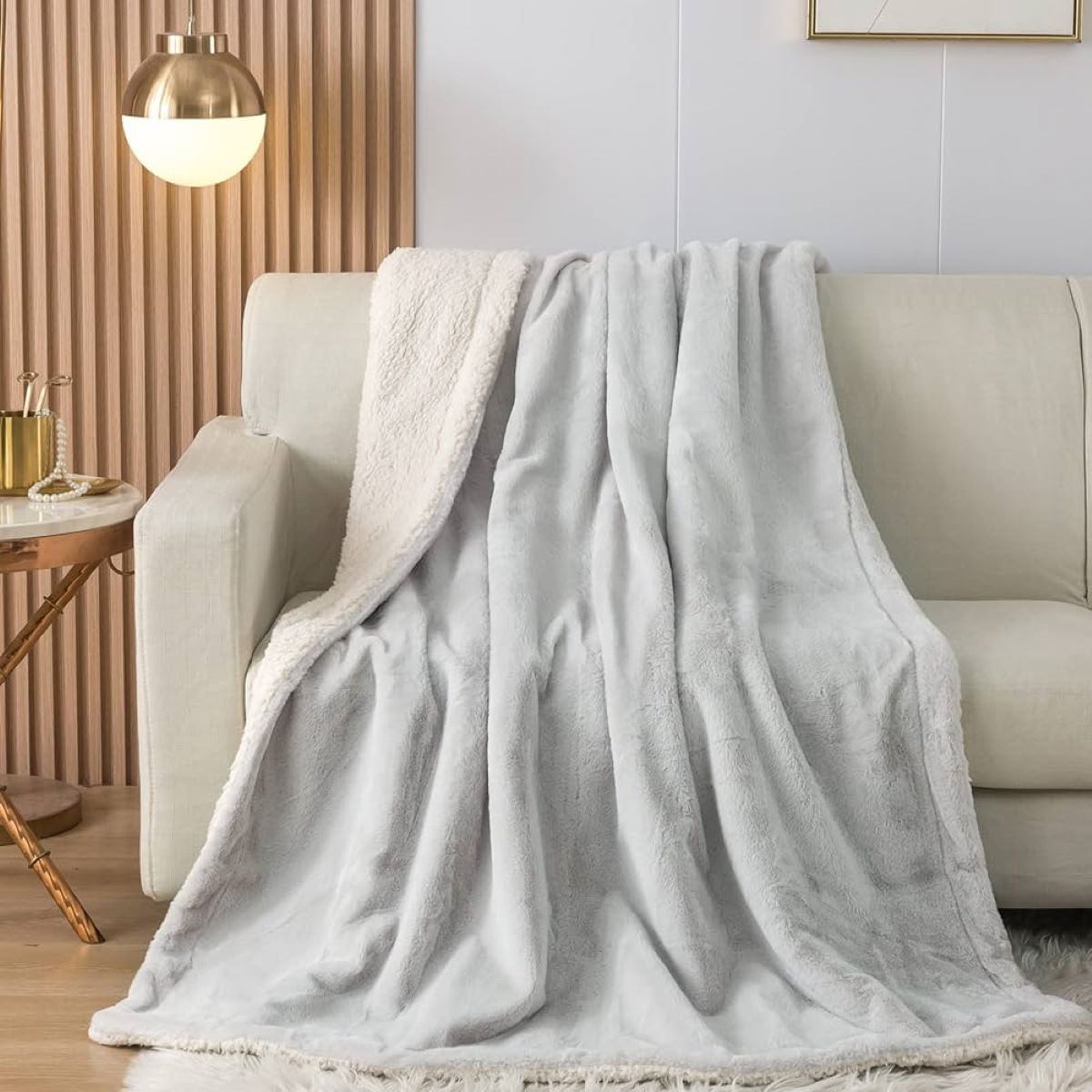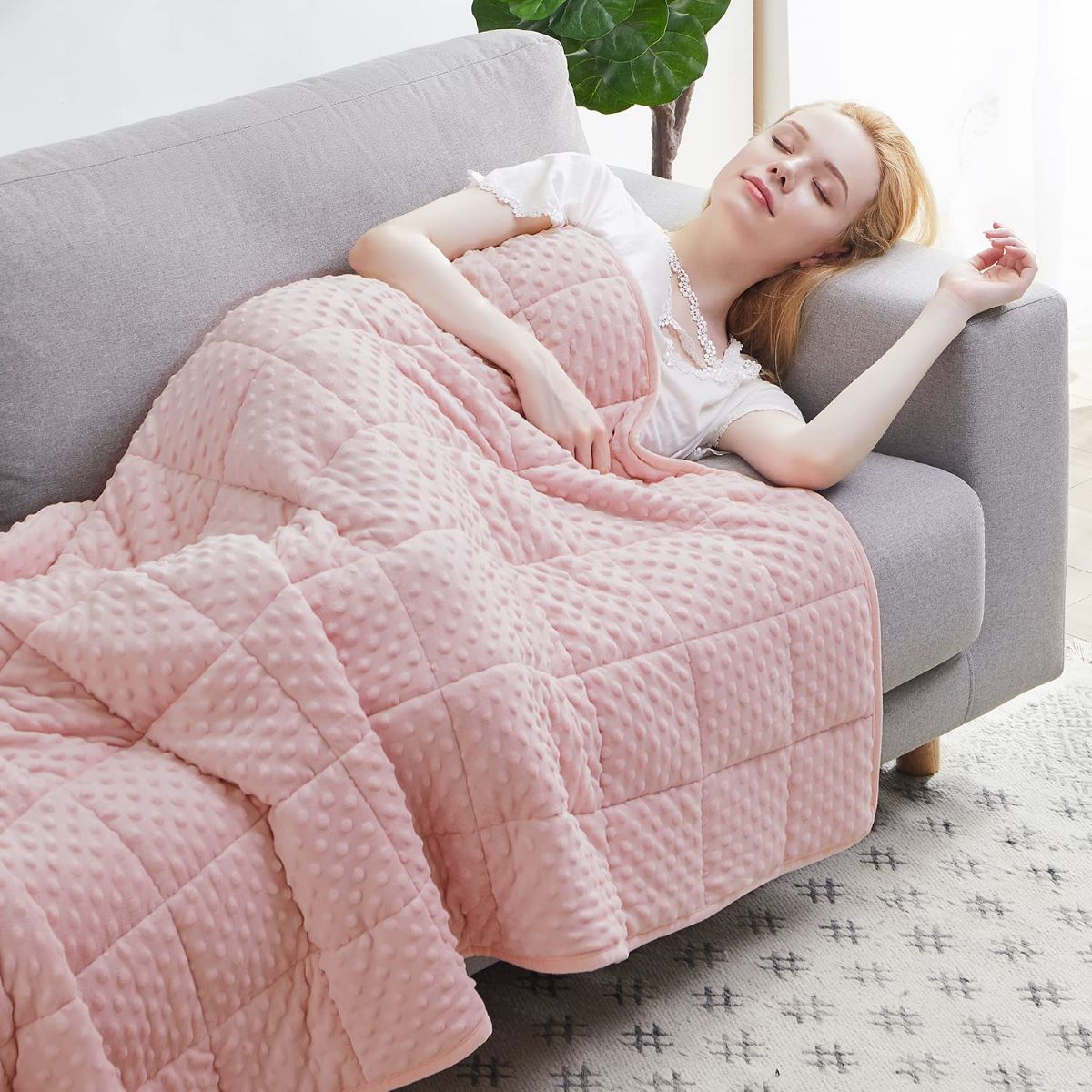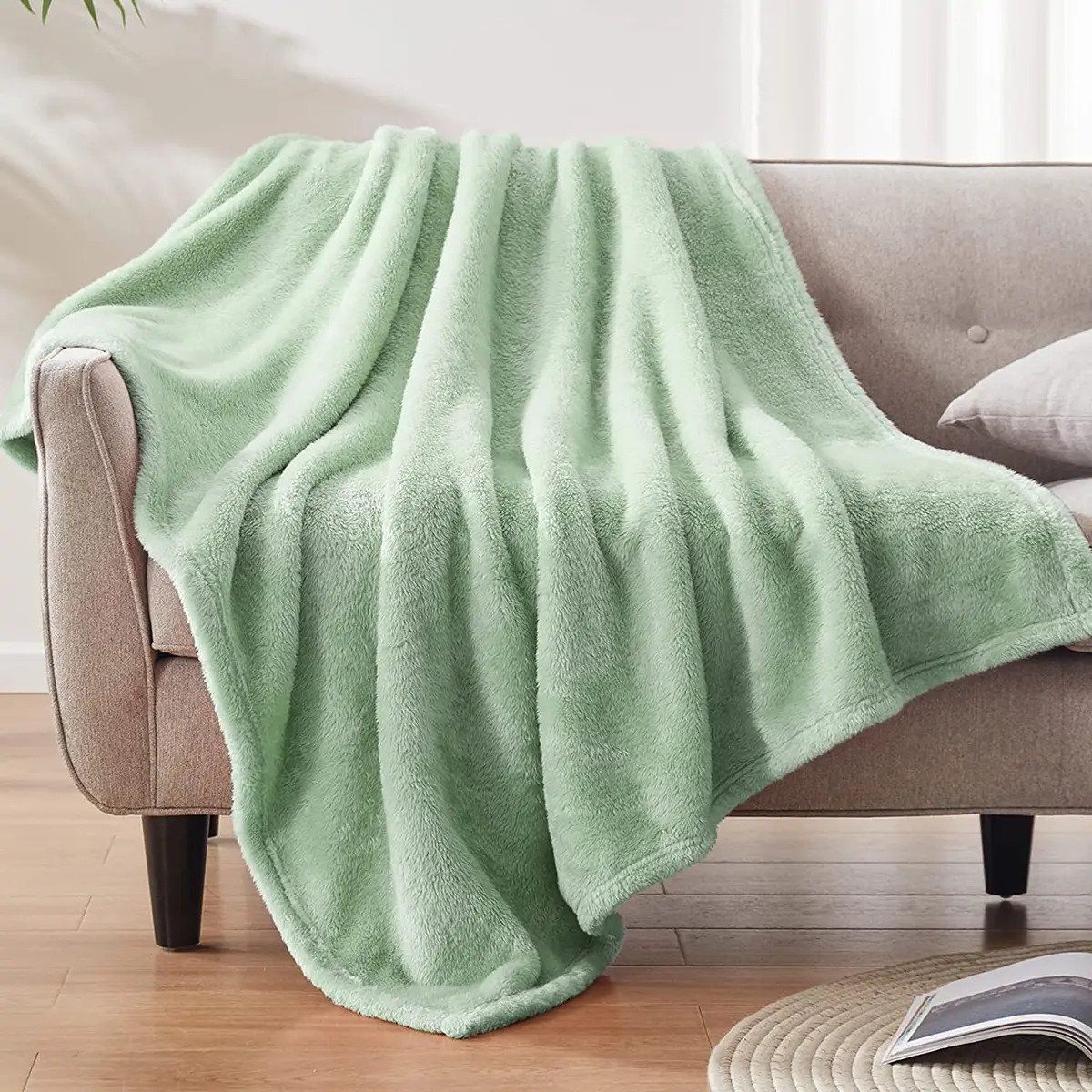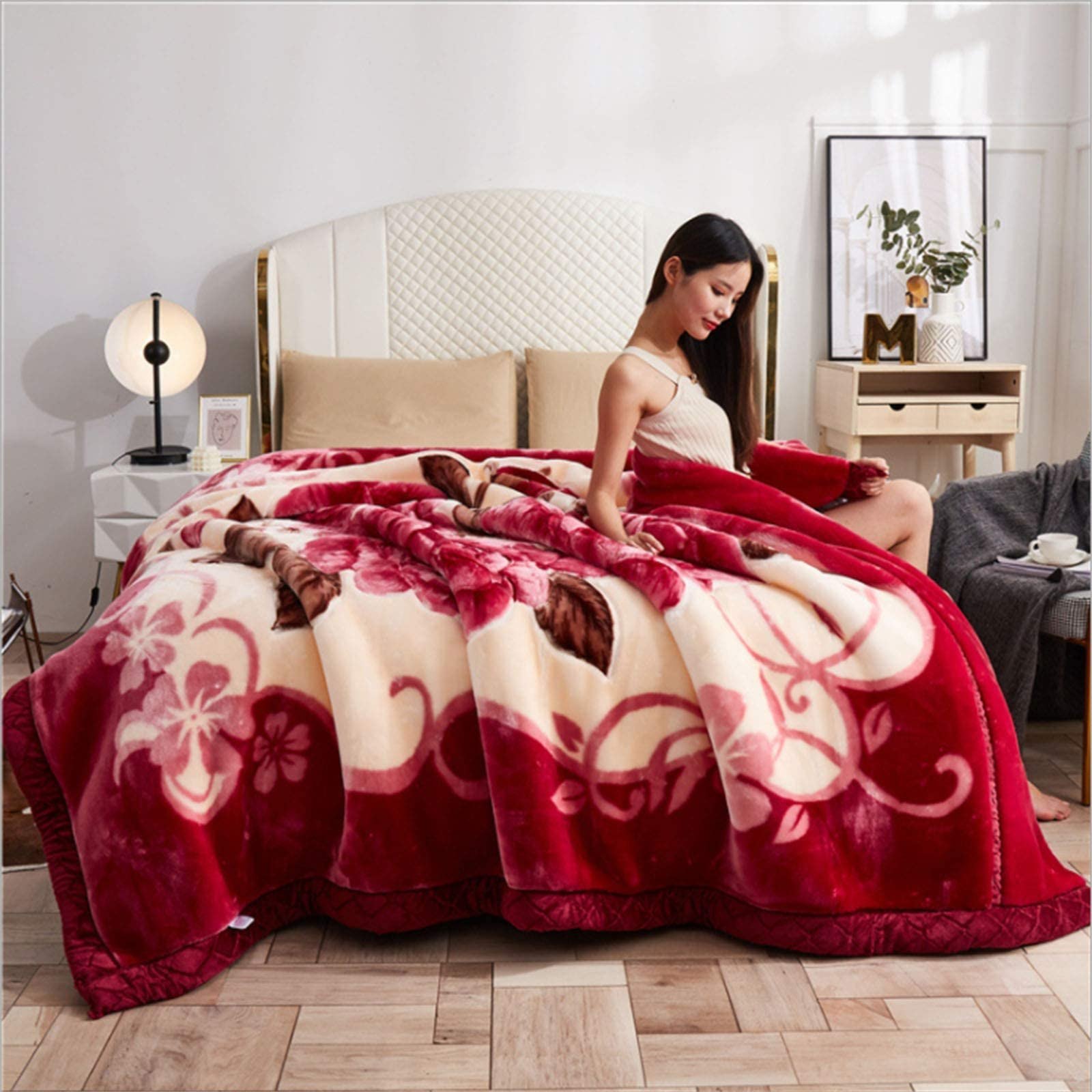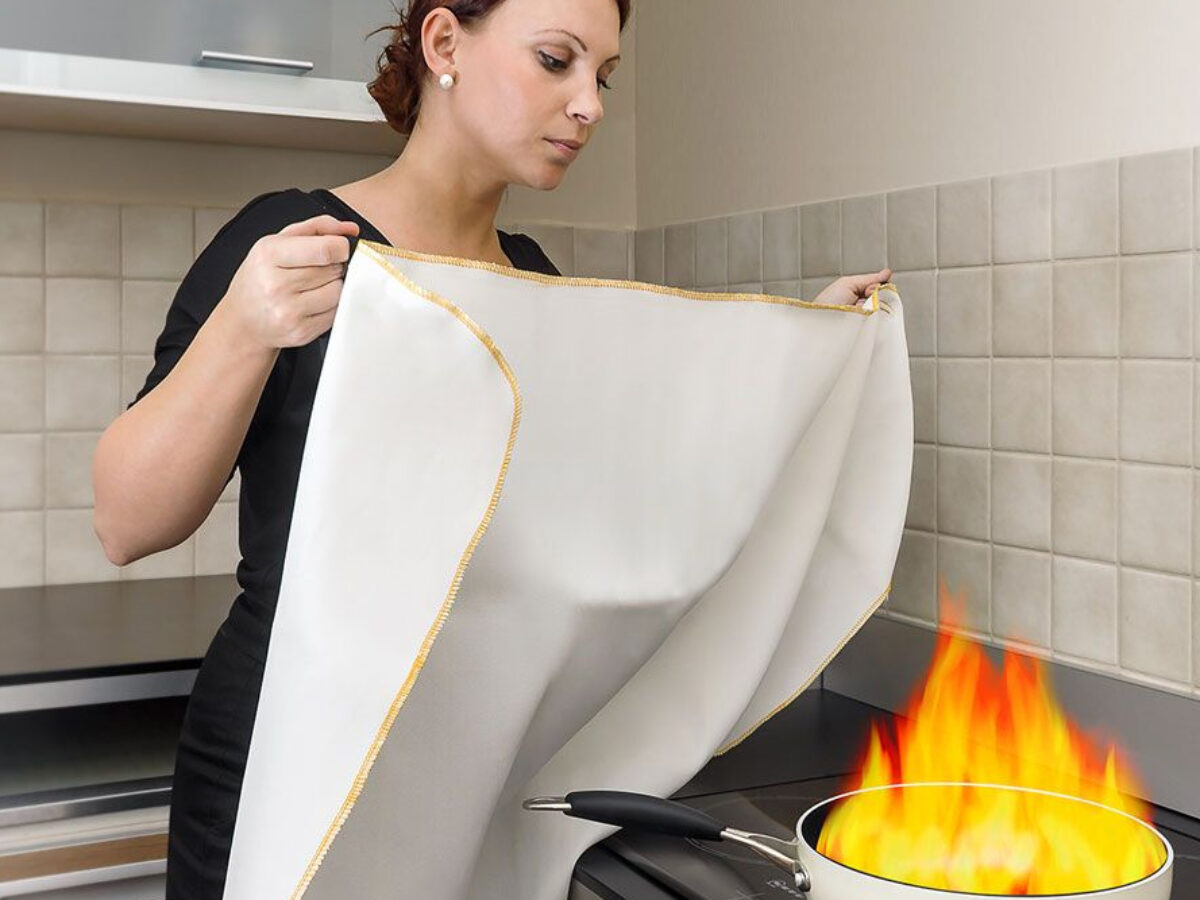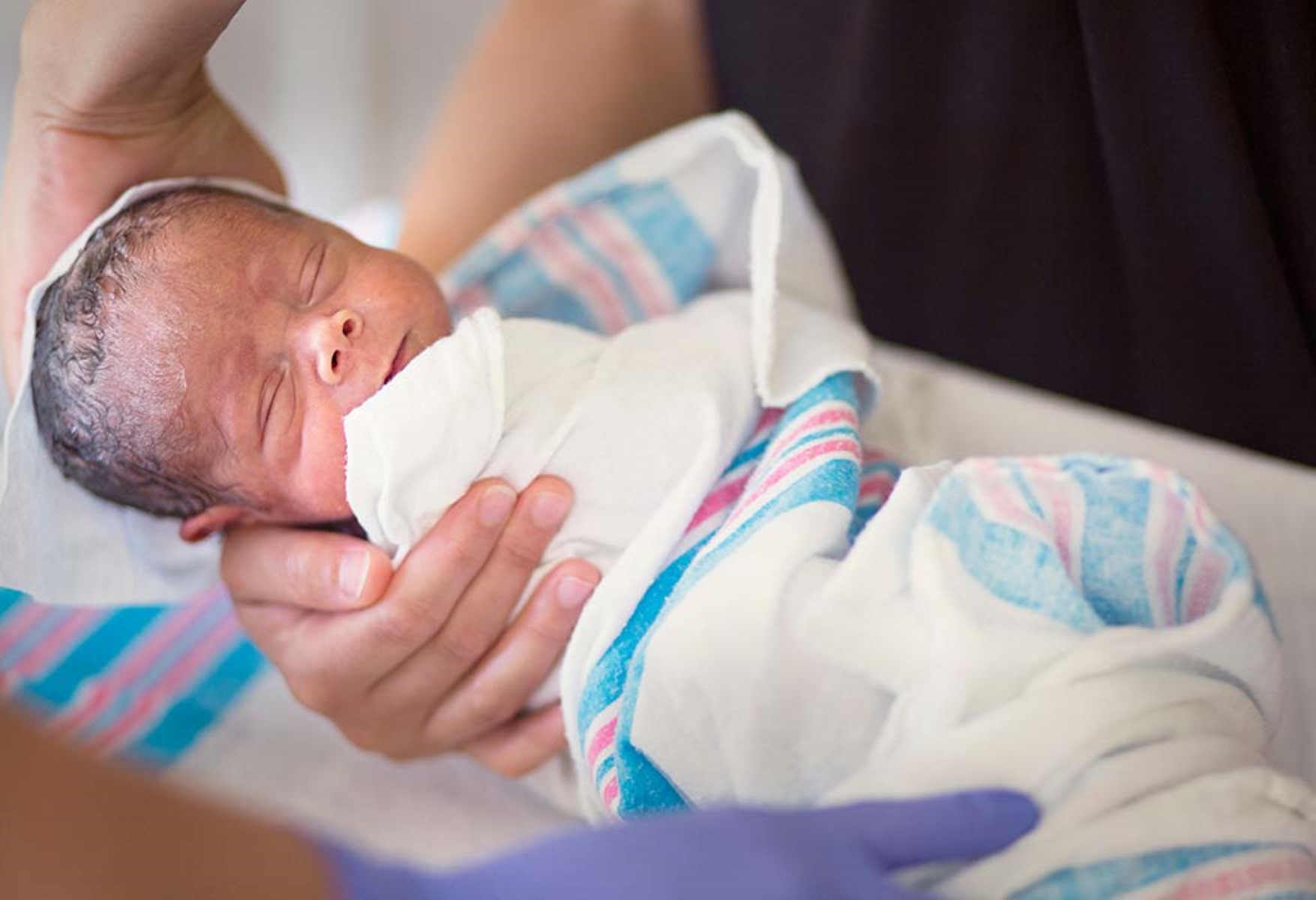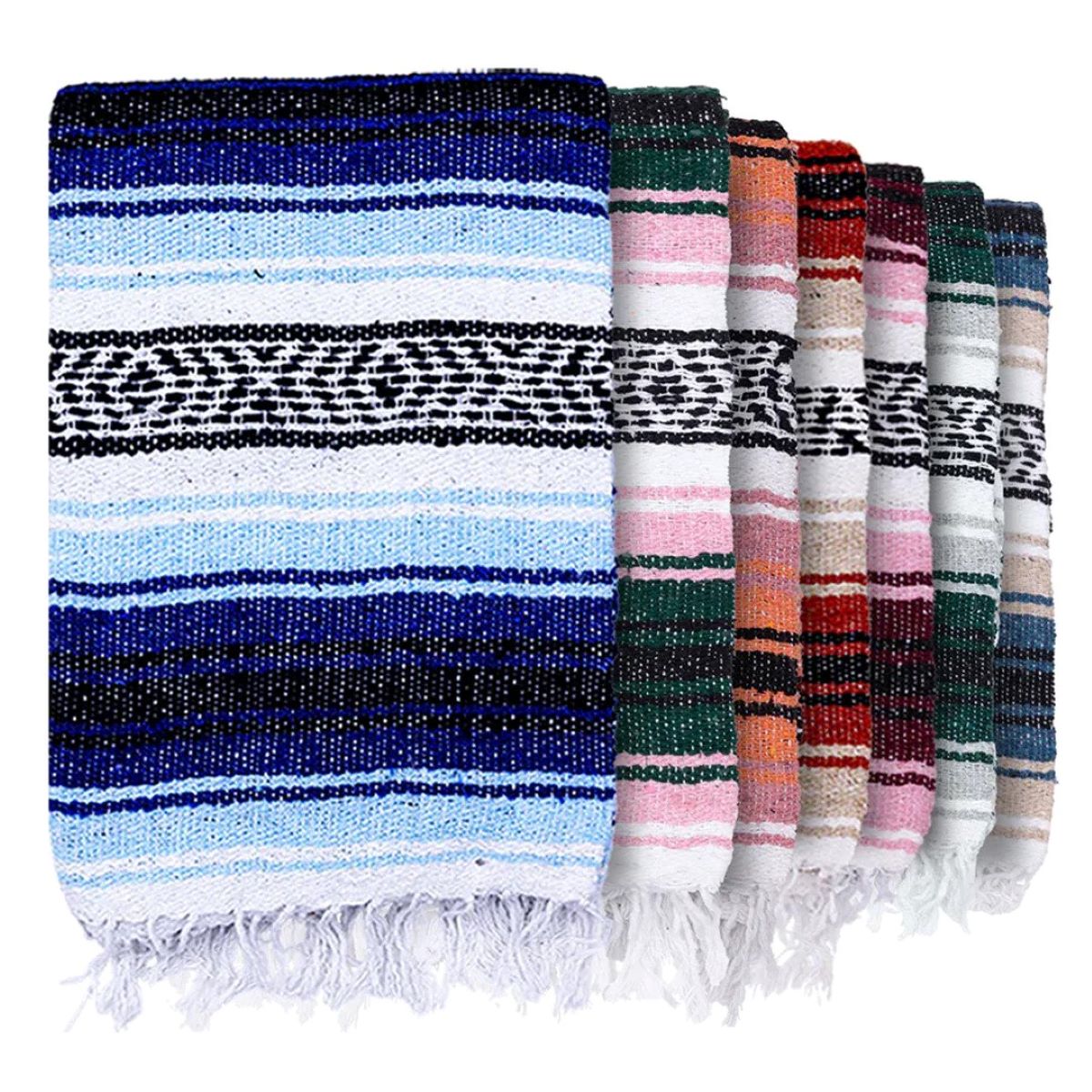

Articles
What Is A Mexican Blanket
Modified: January 23, 2024
Discover the rich history and vibrant colors of Mexican blankets in our collection of informative articles. Explore the cultural significance and various uses of these iconic textiles.
(Many of the links in this article redirect to a specific reviewed product. Your purchase of these products through affiliate links helps to generate commission for Storables.com, at no extra cost. Learn more)
Introduction
Mexican blankets are iconic cultural symbols that have gained popularity all over the world. These vibrant and colorful textiles are known for their intricate designs and rich history. Whether used as decorative pieces, clothing accessories, or for practical purposes, Mexican blankets are deeply rooted in Mexican heritage and traditional craftsmanship.
In this article, we will explore the history, characteristics, and uses of Mexican blankets. We will also delve into the cultural significance of these blankets and provide tips on how to care for them. Additionally, we will highlight where you can find authentic Mexican blankets to add a touch of Mexican flair to your home or wardrobe.
Stay tuned as we unravel the cultural tapestry of Mexican blankets and delve into their fascinating world.
Key Takeaways:
- Mexican blankets are vibrant, versatile textiles deeply rooted in Mexican heritage, offering a touch of cultural flair to home decor, fashion, and outdoor activities.
- From their rich history and traditional uses to their modern applications, Mexican blankets embody the spirit of Mexico, symbolizing pride, identity, and hospitality.
Read more: How To Clean A Mexican Blanket
History of Mexican Blankets
Mexican blankets, also known as serapes or sarapes, have a long and storied history that dates back centuries. The origins of these blankets can be traced back to the indigenous communities of Mexico, who developed sophisticated weaving techniques and textile traditions.
Before the arrival of the Spanish conquistadors in the 16th century, indigenous peoples in Mexico, such as the Aztecs and Mayans, had already mastered the art of weaving. They used natural materials like cotton, agave fibers, and wool from animals like sheep and alpacas to create textiles for various purposes. However, it was the introduction of sheep by the Spanish that revolutionized the textile industry in Mexico.
The Spanish brought with them the Churro sheep, which had a coarse and durable wool. The availability of this wool allowed indigenous communities to expand their textile production and create blankets of exceptional quality. These blankets were not only functional but also served as a means of artistic expression and cultural identity.
Over time, Mexican blankets became an integral part of Mexican culture and were used for various purposes. They were commonly worn as shawls or ponchos, providing protection from the elements. They were also used as bed coverings and rugs, adding warmth and beauty to homes.
As time went on, Mexican blankets began to incorporate a blend of indigenous and Spanish influences. The vibrant colors and intricate patterns found in these blankets were influenced by the ancient traditions of the indigenous peoples as well as the silk textiles brought by the Spanish.
Today, Mexican blankets continue to be cherished for their historical and cultural significance. They not only reflect the artistry and creativity of the Mexican people but also serve as a reminder of the resilience and rich heritage of indigenous communities.
Characteristics of Mexican Blankets
Mexican blankets are easily recognizable for their distinctive characteristics that set them apart from other textiles. These characteristics contribute to their popularity and make them highly sought after by people around the world.
One of the most striking features of Mexican blankets is their vibrant and bold colors. These blankets are known for their use of bright shades such as red, blue, green, and yellow, often arranged in intricate patterns. The use of intense colors reflects the lively and exuberant spirit of Mexican culture.
Another distinguishing characteristic of Mexican blankets is their complex and intricate designs. The patterns include geometric shapes, zigzags, diamonds, and stripes, among others. These designs are carefully woven into the fabric using traditional techniques passed down through generations.
The texture of Mexican blankets is also noteworthy. The blankets are typically made from a blend of materials, including cotton, acrylic, and sometimes wool. This combination of fibers creates a soft and durable texture that makes the blankets comfortable to wear or to use as decorative items.
Size is another important characteristic of Mexican blankets. Most traditional Mexican blankets are large in size, ranging from 4 to 6 feet wide and 6 to 8 feet long. This generous size allows for versatile use, whether as a wrap, a bed cover, or a picnic blanket.
It is worth mentioning that Mexican blankets are not limited to a single style or design. Each region in Mexico has its own unique weaving traditions, resulting in a wide variety of blanket styles. You can find different patterns, color combinations, and motifs depending on the region of origin.
Overall, the characteristics of Mexican blankets encompass a vibrant color palette, intricate designs, a comfortable texture, and a range of sizes. These qualities make Mexican blankets both visually appealing and highly functional, suitable for various occasions and purposes.
Traditional Uses of Mexican Blankets
Mexican blankets have been a staple in Mexican culture for centuries and have served a multitude of traditional purposes. These versatile textiles have been ingeniously used by the indigenous communities of Mexico for both practical and ceremonial functions.
One of the most prominent traditional uses of Mexican blankets is as clothing. They are often worn as ponchos or shawls, providing warmth and protection against the elements. The thick and durable fabric of the blankets makes them ideal for this purpose, allowing individuals to stay cozy during cool evenings or when venturing into the mountains.
Another traditional use of Mexican blankets is as bed coverings. In many Mexican households, it is common to find a bright and colorful Mexican blanket adorning the beds. These blankets not only add warmth but also serve as a decorative element in the bedroom. Their vibrant colors and intricate patterns bring a lively touch to the overall ambiance of the space.
Moreover, Mexican blankets have also played a significant role in cultural and ceremonial events. They have been used as ceremonial cloths, with specific designs and colors holding symbolic meanings. These blankets are often utilized during religious ceremonies, weddings, and traditional dances, adding a touch of authenticity and cultural significance to such events.
In addition to clothing and ceremonial purposes, Mexican blankets have been used as rugs or mats to sit or lie on during picnics or other outdoor gatherings. Their large size allows ample space for multiple people to sit comfortably, and their durable texture provides a barrier between the ground and the individuals.
Furthermore, Mexican blankets have been used as baby wraps or swaddling blankets. The soft and snug fabric of the blankets makes them ideal for wrapping newborns, providing warmth and security. This traditional practice has been passed down through generations as a way to soothe and protect infants.
These traditional uses of Mexican blankets showcase their versatility and adaptability to various aspects of everyday life. From clothing to decorative items to ceremonial cloths, these blankets have been woven into the tapestry of Mexican culture.
Modern Uses of Mexican Blankets
While Mexican blankets have deep historical and traditional roots, they have also found their way into modern-day life, transcending cultural boundaries and gaining popularity in diverse settings. Their vibrant colors, intricate designs, and practical features have made them a versatile and stylish accessory in various areas of contemporary living.
One of the most common modern uses of Mexican blankets is as a decorative element in home interiors. These blankets can be draped over sofas, chairs, or beds, instantly adding a splash of color and a touch of Mexican culture to the space. Their vibrant patterns and bold hues serve as eye-catching focal points that can elevate the overall aesthetic of a room.
In addition to their decorative applications, Mexican blankets are also frequently used as picnic or beach blankets. Their large size and durable fabric make them ideal for spreading out on the ground and creating a comfortable seating area. Whether enjoying a beach day or having a picnic in the park, these blankets provide a cozy and stylish spot to relax.
Furthermore, Mexican blankets have become popular accessories for outdoor activities such as camping and hiking. Their versatility makes them useful for wrapping around the body to stay warm during chilly evenings or as makeshift bedding when camping out. Their compact size when folded up makes them easy to transport and carry.
Another modern use of Mexican blankets is as fashion accessories. They can be worn as oversized scarves, wraps, or even used as a sarong on the beach. The vibrant colors and intricate designs make them eye-catching statement pieces that can elevate any outfit. From casual to bohemian to eclectic styles, Mexican blankets add a unique touch to fashion ensembles.
Moreover, Mexican blankets have also found their way into yoga studios and meditation spaces. They can be used as yoga mats or can be folded to provide cushioning and support during yoga or meditation practices. The vibrant colors and soft texture create a welcoming and serene atmosphere that enhances the overall experience.
These modern uses of Mexican blankets demonstrate their adaptability and versatility in various aspects of contemporary life. Whether as decorative pieces, outdoor accessories, fashion statements, or wellness tools, Mexican blankets continue to captivate and inspire people from all walks of life.
Read also: 10 Incredible Mexican Blanket for 2024
Production and Making of Mexican Blankets
The production of Mexican blankets involves a careful and intricate process that combines traditional craftsmanship with modern techniques. These blankets are typically handmade by skilled artisans who have mastered the art of weaving and have a deep understanding of the cultural significance and techniques passed down through generations.
The first step in the production of Mexican blankets is the selection and preparation of the materials. The choice of materials depends on the desired outcome and the region’s traditional practices. Common materials used include cotton, acrylic, and a blend of both. In some cases, natural fibers such as wool may also be utilized.
Once the materials are gathered, they are then dyed to achieve the vibrant and bold colors that Mexican blankets are known for. Natural and synthetic dyes are used to produce a wide range of hues, allowing for creative and diverse color combinations. The dyeing process requires skill and precision to ensure an even and long-lasting color.
Next, the weaving process begins. Traditional Mexican blankets are typically woven on large vertical looms known as “telar de cintura” or backstrap looms. These looms consist of a series of vertical threads attached to a horizontal strap that is tied around the waist of the weaver. By leaning back and using tension, the weaver controls the weaving process.
The weaver carefully selects the colored threads and starts weaving the blanket, following the desired pattern and design. The complex geometric patterns and intricate designs are achieved through meticulous attention to detail and the weaver’s expertise. The weaving process can take several days to weeks, depending on the complexity of the design and the size of the blanket.
Once the weaving is complete, the edges of the blanket are finished, often with decorative fringe or tassels. This adds a final touch to the blanket and enhances its overall aesthetic appeal.
Modern techniques and machinery have also been integrated into the production process to meet the increasing demand for Mexican blankets. While some blankets are still handmade using traditional methods, others are produced using semi-automatic or fully automated looms. These machines streamline the production process, making it more efficient while still maintaining the authenticity and quality of the blankets.
The production and making of Mexican blankets exemplify the dedication and craftsmanship of the artisans who carry on this time-honored tradition. The blend of traditional techniques with modern innovations ensures the continuation of this cherished art form and the availability of these beautiful blankets to people around the world.
A Mexican blanket, also known as a serape, is a colorful, woven blanket traditionally used in Mexico for warmth and as a multi-purpose cloth. It is often made of cotton or wool and features vibrant stripes and geometric patterns.
The Cultural Significance of Mexican Blankets
Mexican blankets hold a profound cultural significance and play a vital role in Mexican heritage. They are not just textiles; they are a reflection of the history, traditions, and artistic expressions of the Mexican people. The cultural significance of Mexican blankets can be observed in various aspects of Mexican life and identity.
First and foremost, Mexican blankets serve as powerful symbols of cultural pride. They represent the rich and diverse heritage of Mexico and the indigenous communities who have crafted these textiles for centuries. Mexican blankets are infused with the colors, patterns, and designs that embody the spirit of Mexico, making them an integral part of cultural celebrations and identities.
Furthermore, Mexican blankets are seen as visual narratives that tell stories of the indigenous traditions, rituals, and legends of the Mexican people. The intricate designs depicted on the blankets often have cultural and spiritual meanings. For example, geometric shapes may represent the natural elements, while symbols like flowers or animals may symbolize fertility or protection.
In addition to their symbolism, Mexican blankets are also associated with warmth and hospitality. In Mexican culture, these blankets are offered to guests as a sign of welcome and comfort. They are often seen at community gatherings, festivals, and family events, where they are used to create cozy spaces for people to gather, share stories, and celebrate together.
Mexican blankets also serve as a form of artistic expression and representation of individual and collective identity. Many talented artisans and weavers dedicate their lives to perfecting the craft of creating these blankets. Through their intricate designs and distinct weaving techniques, these artisans bring their own personal creativity and cultural heritage to every blanket they produce.
Moreover, Mexican blankets have crossed borders and gained international recognition, becoming a symbol of Mexican culture worldwide. They have found their way into homes, fashion, and art galleries, carrying with them the spirit and essence of Mexico. The popularity of Mexican blankets goes beyond being merely a trend; they are cherished for their authenticity and the vibrant reflection of Mexican traditions they offer.
The cultural significance of Mexican blankets goes beyond their aesthetic appeal and practical uses. They evoke a sense of pride, belonging, and tradition, representing the vibrant cultural tapestry of Mexico and its people. The continued appreciation and preservation of these blankets ensure that the cultural legacy they embody will endure for future generations to cherish and celebrate.
Popular Mexican Blanket Designs
Mexican blankets are known for their vibrant colors and intricate patterns, each design reflecting the unique cultural heritage and traditions of different regions in Mexico. These blankets feature a wide array of popular designs that have become iconic and widely recognized. Let’s explore some of the most popular Mexican blanket designs:
1. Zapotec Diamond: The Zapotec Diamond design originates from the Zapotec region in Oaxaca. It features a crisp diamond pattern with bold and contrasting colors, often combined with intricate geometric motifs. This design represents the ancient Zapotec civilization and their rich artistic legacy.
2. Saltillo Serape: The Saltillo Serape design is characterized by its bold stripes and vibrant color combinations, often featuring intricate detailed patterns within the stripes. Saltillo, a city in the state of Coahuila, is renowned for its production of these serapes, which are often used as ponchos or decorative pieces.
3. Aztec Calendar: The Aztec Calendar design pays homage to the ancient Aztec civilization. It features a circular motif with intricate glyphs and symbols representing the Aztec calendar system, celestial bodies, and spiritual beliefs. This design is highly recognizable and carries great cultural significance.
4. Otomi Embroidery: The Otomi Embroidery design showcases the intricate and colorful embroidery technique of the Otomi community in central Mexico. This design often depicts folkloric scenes, animals, and birds embroidered onto solid-colored backgrounds, creating a stunning tapestry of storytelling and cultural representation.
5. Huichol Art: Huichol art is a unique design style that originates from the Huichol indigenous community in the states of Jalisco and Nayarit. Huichol blankets feature intricate beadwork, often depicting traditional symbols and spiritual motifs. These intricate and colorful designs are a testament to the Huichol community’s rich cultural heritage.
6. Mexican Serape Stripes: The classic Mexican Serape Stripes design is characterized by its bold and vividly colored stripes. It often includes a combination of horizontal, vertical, and diagonal stripes in various sizes, creating a visually stunning and dynamic pattern that has become an iconic representation of Mexican textiles.
7. Oaxacan Tapestry: Oaxacan tapestries are known for their exquisite detail and unique combinations of colors and geometric patterns. These designs often incorporate traditional Zapotec motifs, including animals, plants, and mythical figures, intricately woven into the fabric. Oaxacan tapestries are highly prized for their craftsmanship and beauty.
These are just a few examples of the many popular Mexican blanket designs that showcase Mexico’s rich cultural heritage and artistic traditions. Each design represents a unique story, weaving together history, symbolism, and the creative spirit of the Mexican people.
How to Care for Mexican Blankets
Mexican blankets are cherished textiles that require proper care to ensure their longevity and beauty. By following a few simple guidelines, you can keep your Mexican blankets in pristine condition for years to come. Here are some tips on how to care for Mexican blankets:
1. Read the Care Instructions: Before attempting any cleaning or maintenance, check the care instructions provided by the manufacturer or artisan. These instructions may contain specific guidelines for washing, drying, and storing the blanket based on the materials used.
2. Spot Cleaning: For minor stains or spills, it’s best to spot clean the affected area immediately. Gently blot the stain with a clean cloth or paper towel, avoiding excessive rubbing. Use a mild detergent mixed with water or a specialty fabric cleaner designed for delicate textiles. Test the cleaning solution on an inconspicuous area of the blanket before applying it to the stain.
3. Hand Washing: For most Mexican blankets, hand washing is the preferred method of cleaning. Fill a basin or sink with cool or lukewarm water and a gentle, dye-free detergent. Submerge the blanket in the water and gently agitate it to loosen any dirt or debris. Avoid wringing or twisting the blanket as it may damage the fibers. Rinse the blanket thoroughly with clean water and gently squeeze out excess water without twisting.
4. Machine Washing (if recommended): Some Mexican blankets may be suitable for machine washing, but it’s crucial to check the care instructions beforehand. If machine washing is permitted, use a gentle or delicate cycle with cold water. Place the blanket in a mesh laundry bag to protect it from tangling or excessive agitation. Avoid using harsh detergents or bleach, as they can damage the fabric’s colors and fibers. After washing, gently reshape the blanket and air dry it away from direct sunlight.
5. Drying: Mexican blankets should be air dried to preserve their shape and prevent shrinkage. Lay the blanket flat on a clean surface, such as a drying rack or clean towels, ensuring it is evenly spread out. Avoid hanging the blanket, as this can cause it to stretch or warp. Direct sunlight should also be avoided, as it can cause colors to fade over time.
6. Storage: When not in use, Mexican blankets should be stored in a cool, dry place to protect them from moisture, pests, and excessive heat. Avoid storing them in plastic bags, as this can lead to trapping moisture and mildew growth. Instead, opt for breathable storage containers or cotton storage bags that allow air circulation.
7. Professional Cleaning (if necessary): If your Mexican blanket requires a more thorough cleaning or has intricate detailing that needs special care, it may be best to seek professional cleaning services. Professional cleaners experienced with delicate textiles can ensure that the blanket is properly cleaned without compromising its integrity.
By following these care guidelines, you can ensure that your Mexican blankets retain their vibrant colors, softness, and longevity for generations to come. Proper care and maintenance will help preserve the beauty and cultural significance of these cherished textiles.
Read more: What To Plant With Mexican Feather Grass
Where to Buy Authentic Mexican Blankets
When looking to purchase authentic Mexican blankets, it’s essential to seek out reputable sources that prioritize craftsmanship, fair trade practices, and cultural integrity. Here are a few places where you can find authentic Mexican blankets:
1. Artisan Markets and Street Vendors: If you have the opportunity to visit Mexico, exploring artisan markets and engaging with local street vendors can be a wonderful way to find authentic Mexican blankets. These markets are often filled with skilled artisans showcasing their work, offering a wide variety of blankets made with traditional techniques and designs. Engaging directly with the artisans allows you to learn about the cultural significance of the blankets and support the local economy.
2. Fair Trade Organizations: Look for fair trade organizations that specialize in Mexican textiles. These organizations work directly with artisans and cooperatives to provide fair wages and support sustainable practices. By purchasing from fair trade sources, you can ensure that your Mexican blankets are ethically sourced, supporting the livelihoods of the artisans who create them.
3. Online Marketplaces: Online marketplaces offer a vast selection of Mexican blankets from various sellers. Look for reputable online platforms that specialize in handmade and authentic products. Read customer reviews, check seller ratings, and verify that the seller sources their blankets directly from artisans or cooperatives. This way, you can have a wider range of options and conveniently find the perfect Mexican blanket for your needs.
4. Mexican Specialty Stores: In many countries, there are specialty stores that focus on Mexican goods, including textiles. These stores often curate a collection of authentic Mexican blankets sourced from artisans or cooperatives. Visiting these stores allows you to see and feel the blankets in person, supporting local businesses that value and promote Mexican culture.
5. Global Trade Shows and Exhibitions: Keep an eye out for global trade shows and exhibitions that feature Mexican textiles and crafts. These events bring together artisans and sellers from different regions, offering a unique opportunity to browse and purchase authentic Mexican blankets. Trade shows and exhibitions often feature a wide range of designs and provide insightful information about the craftsmanship behind each blanket.
Remember, when seeking authentic Mexican blankets, it’s important to do your research and support sources that prioritize the preservation of cultural heritage and the fair treatment of artisans. By purchasing directly from artisans or through fair trade organizations, you can not only bring a piece of Mexican culture into your home but also support the communities that have dedicated themselves to creating these beautiful textiles.
Conclusion
Mexican blankets are more than just textiles; they are a reflection of Mexico’s rich cultural heritage, craftsmanship, and artistic expression. From their vibrant colors and intricate designs to the traditional weaving techniques passed down through generations, each Mexican blanket tells a story and carries a piece of Mexico’s cultural tapestry.
In this article, we explored the history, characteristics, and uses of Mexican blankets. We delved into their traditional and modern applications, showcasing their versatility as clothing, home decor, picnic essentials, fashion accessories, and more. Mexican blankets have seamlessly woven themselves into different aspects of contemporary life, capturing the hearts of people around the world.
We also discussed the production and making of Mexican blankets, highlighting the skill and dedication of the artisans who create these beautiful textiles. Whether through traditional hand-weaving methods or modern machinery, Mexican blankets are crafted with a deep respect for tradition and a commitment to preserving cultural heritage.
Moreover, we touched on the cultural significance of Mexican blankets, as symbols of pride, identity, and hospitality. These blankets represent Mexico’s diverse indigenous communities, their ancient traditions, and their ongoing contributions to the country’s vibrant culture. Mexican blankets inspire a sense of warmth, unity, and appreciation for the beauty and depth of Mexican heritage.
Lastly, we explored where to find authentic Mexican blankets, emphasizing the importance of supporting reputable sources such as artisans, fair trade organizations, and specialty stores. By making conscious purchasing decisions, we can contribute to the preservation of Mexican craftsmanship and ensure that artisans receive fair compensation for their exceptional skills.
In conclusion, Mexican blankets are more than just textiles; they embody the spirit of Mexico itself. Their vibrant colors, intricate designs, and rich cultural significance make them cherished treasures that add beauty and cultural authenticity to any setting. So, whether you’re seeking to decorate your home, enhance your style, or simply embrace the warmth of Mexican tradition, a Mexican blanket is the perfect choice.
Frequently Asked Questions about What Is A Mexican Blanket
Was this page helpful?
At Storables.com, we guarantee accurate and reliable information. Our content, validated by Expert Board Contributors, is crafted following stringent Editorial Policies. We're committed to providing you with well-researched, expert-backed insights for all your informational needs.

